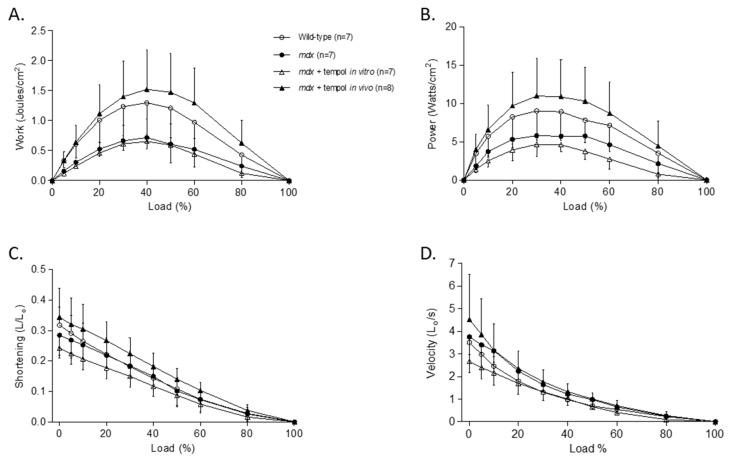Figure 2.
Diaphragm Muscle Isotonic Contractile Properties. Group data (mean ± SD) for work—(A), power—(B), shortening—(C) and shortening velocity—(D) load relationships for diaphragm muscle from wild-type (n = 7), mdx (n = 7), mdx + tempol in vitro (n = 7) and mdx + tempol in vivo (n = 8). For the mdx + tempol in vitro group, diaphragm muscle preparations were studied in Krebs solution containing 1 mM tempol in vitro. The mdx + tempol in vivo group received 1 mM tempol in their drinking water for two weeks. Data were statistically compared by two-way analysis of variance (ANOVA). Work: Load: p < 0.0001; Gene: p = 0.0071; tempol in vitro: p = 0.5020; tempol in vivo: p = 0.0063; Power: Load: p < 0.0001; Gene: p = 0.0115; tempol in vitro: p = 0.0037; tempol in vivo: p = 0.0177; Shortening: Load: p < 0.0001; Gene: p = 0.7068; tempol in vitro: p = 0.0995; tempol in vivo: p = 0.1117; Velocity: Load: p < 0.0001; Gene: p = 0.1756; tempol in vitro: p = 0.0159; tempol in vivo: p = 0.5427.

